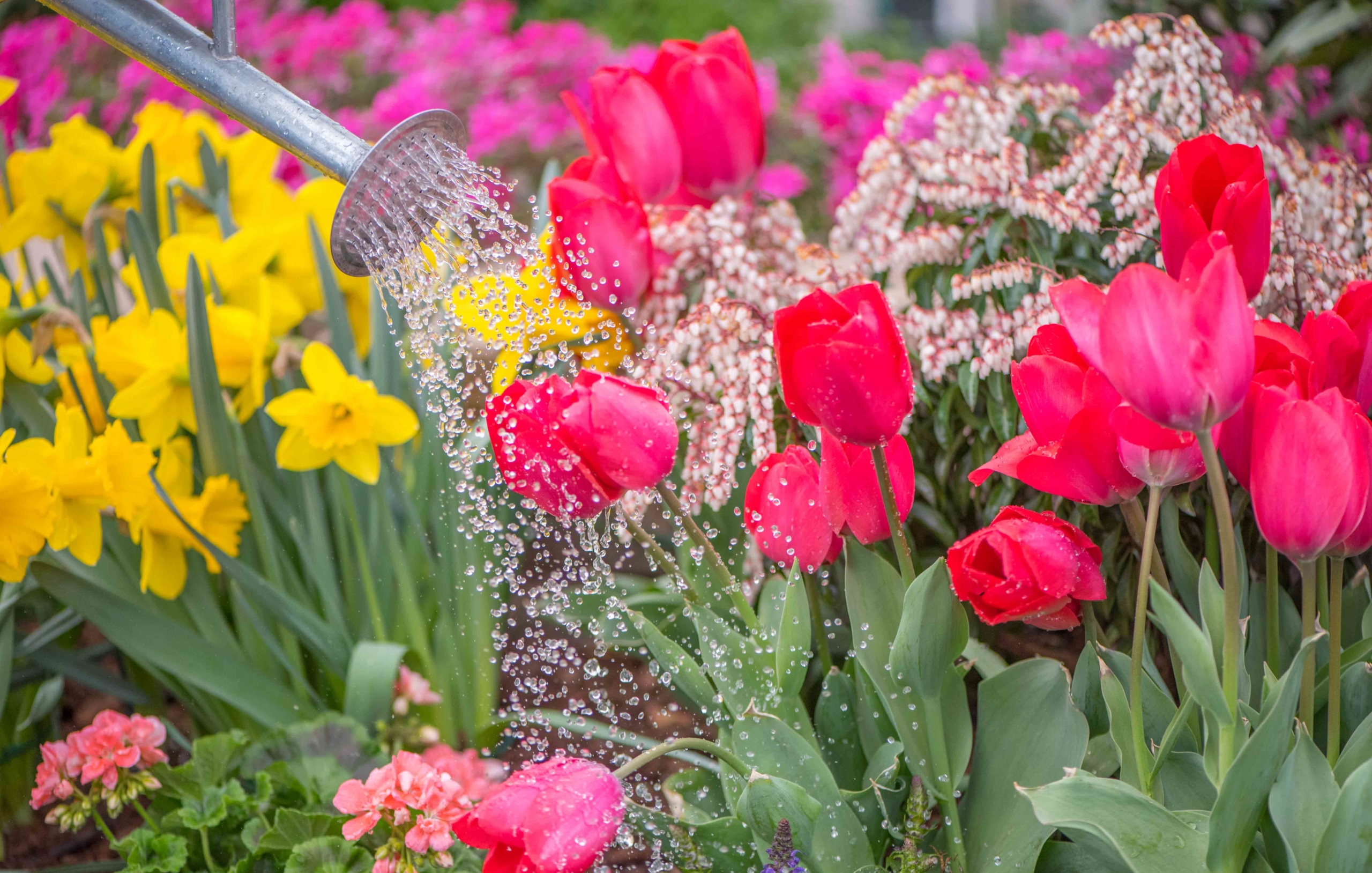Watering Instructions
The Golden Rule: Check the moisture level before you water!
Until the root system is well-established–usually one full year–check the soil for moisture to determine how wet or dry it is before watering. Dig down into the root ball and surrounding soil at a depth of 4–5 inches and feel the soil with your fingers. If the soil is moist, do not water. Cover it back up and check again later. If the soil is dry, water the plant thoroughly until the root ball and surrounding soil are wet. Watering deeply encourages the roots to grow deeper into the soil, which will allow the plant to better endure droughts.
It is important to check the soil by hand. Wilted leaves are not always a sign that the plant is thirsty. They can also indicate that the plant is receiving too much water. Individual plants also dry out at different rates, so you will need to check each plant before watering. Once you determine how quickly your soil dries out, you can figure out a watering schedule or if you need to apply more water per application.
Once you thoroughly saturate the root zone and the surrounding soil, you should not water again until the plant needs water:
- In the spring and fall, check the soil for moisture every 3–5 days.
- In the summer, check the soil for moisture every 2–3 days for small plants and every 3–5 days for larger plants and trees.
- Check container plants and hanging baskets every day, as they dry out much faster than plants in the ground. Adding a water-grabbing polymer, such as Soil Moist, can help reduce the frequency of watering in potted plants. These polymers absorb the excess water that typically drains through the pot, hold it in a gel form and release it to the roots when needed.
- Plants growing in the shade of large trees also tend to dry out more quickly because of the competition for moisture from the large tree roots. Adjust watering schedules accordingly.
Watering methods
We recommend hand watering with a watering wand to direct as much water as possible over the root ball and surrounding soil most effectively. If you have a large number of plants and hand watering is not an option, you can use sprinklers, Gator Bags and soaker hoses, if used properly.
- Sprinklers: Sprinklers are a good way to soak an entire bed of plants, especially those with a lot of annuals and perennials. If you’re using a sprinkler, let it run long enough to provide one inch of water to your garden beds.
- Gator Bags: Gator bags hold up to 20 gallons of water, are secured to the trunk of the tree, and release the water slowly to the root ball over the course of 15–20 hours. These are used to water trees during hot and dry summer months.
- Soaker Hoses: These hoses are most effective for garden bed or row plants. Make sure the hose covers all sides of the plants, then let the water run long enough to soak the root ball and surrounding soil. During hot and dry weather on plants that are 18 inches tall, leave your “sweating type” soaker hose to run for at least 4 hours.


